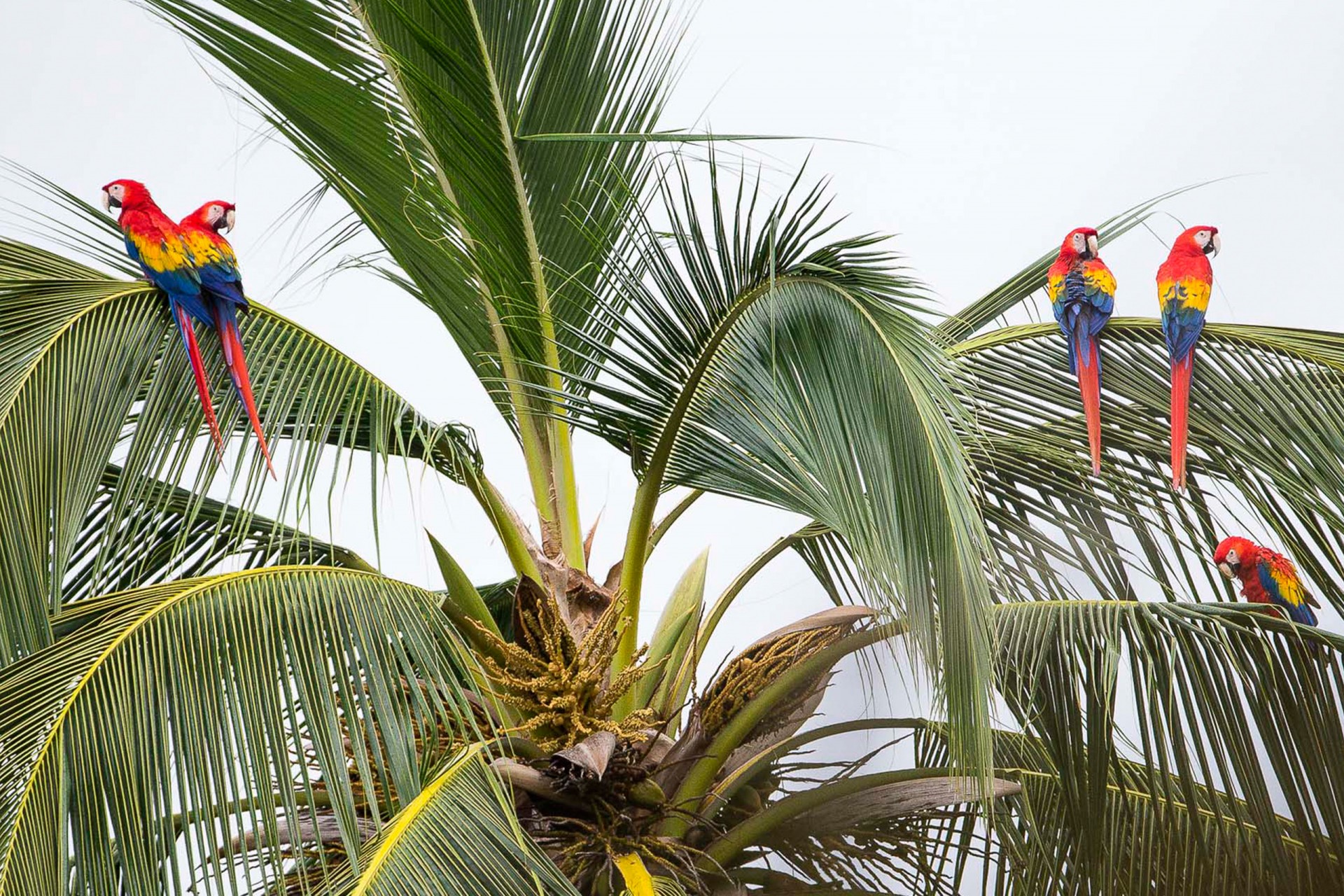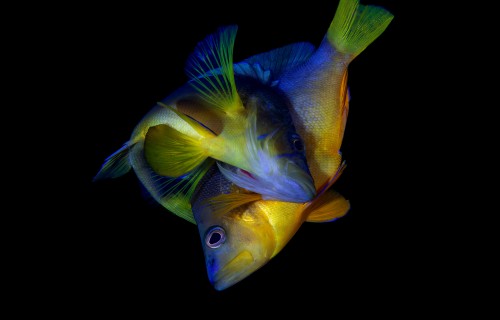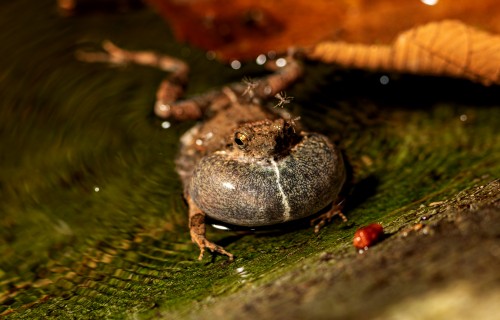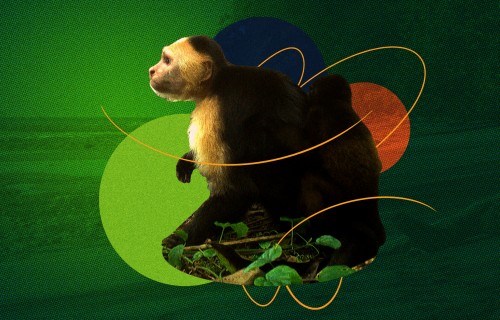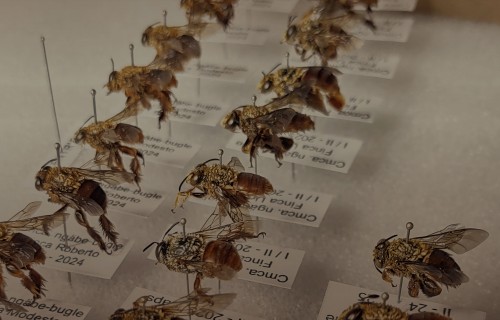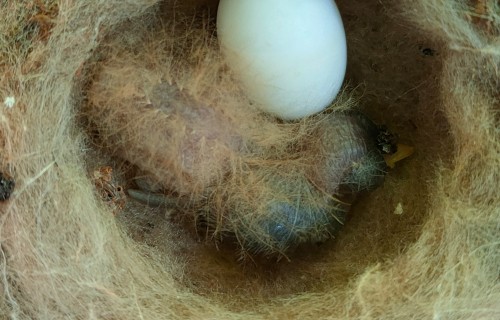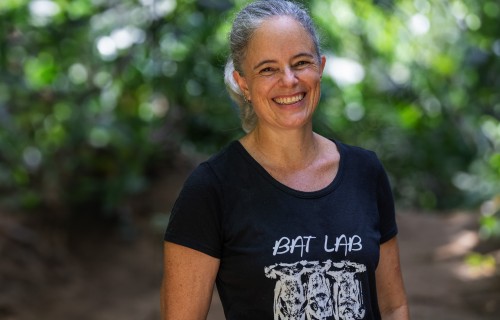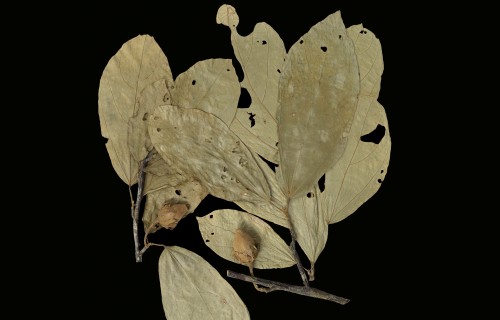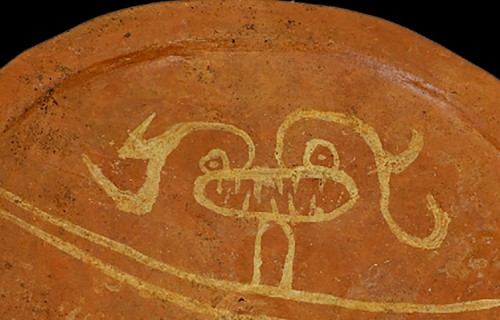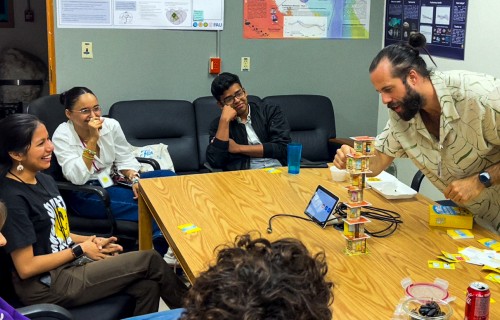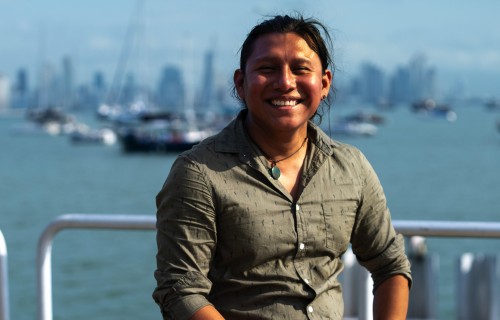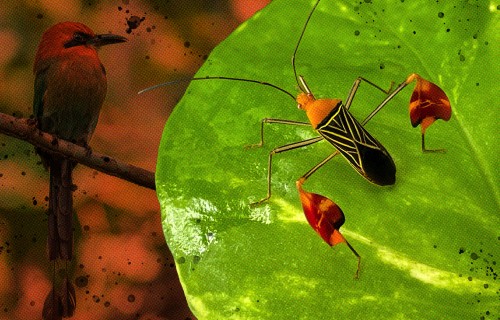A comparison of colorful hamlets
from the Caribbean challenges ideas
about how species arise
More
to discover
New bird checklists from Jicarón and Jicarita Islands in Coiba National Park, Panama
Panama
A trip to Jicarón Island during the Coiba Bioblitz led to a published bird checklist.
The first published bird checklist from Jicarón and Jicarita, Panama’s southernmost islands and part of Coiba National Park, underscores the importance of sending biologists to explore new territory. Both islands are accessible from the Smithsonian Tropical Research Institute’s newest research station on Coibita Island.
In 2015, photographer Christian Ziegler (with the International League of Conservation Photographers) and ecologist Omar Lopez (then at INDICASAT, now at SENACYT) organized biologists from a number of different institutions to participate in the first Coiba BioBlitz, an effort to document as many species as possible in the park.
“During the BioBlitz we only spent a couple of days on Jicarón Island, but that was enough to add to checklists that ornithologists Oscar Johnson from Louisiana State University started in 2004 and George Angehr added to in 2015, ” explained Claudio Monteza, former STRI fellow, now doctoral student at the Max Planck Institute for Animal Behavior. “While we were there, we also noticed capuchin monkeys spending more time on the ground.”
Seabirds, like this Brown Booby, nest on the cliffs of Jicaron Island in large numbers.
Credit: Christian Ziegler
“Later, Pedro [Castillo] and I went back to study the monkeys. Pedro would go up a stream to wash the breakfast dishes and he would stay there for a half an hour washing, watching birds and adding new species to our bird list for Jicaron. Once, he looked up at the sky and soaring above the canopy he observed a Zone-tailed Hawk (a new record for the park), Eureka! We decided to do a proper study to create a publishable checklist.”
“As an ornithologist, doing a checklist of birds in Coiba National Park is exciting and intimidating at the same time, because you know Alexander Wetmore [sixth Secretary of the Smithsonian Institution 1945-1952] visited many islands and islets in the park. In 1957, he alone published the first checklist of birds for Coiba National Park, registering 133 species. Nevertheless, he was not able to visit Jicarón, the second-largest island in the park,” explained Pedro Castillo, senior undergrad at the University of Panama.
Between 2004 and 2019, a total of 115 species were recorded on Jicarón Island and 53 on Jicarita, including 23 bird species never before reported from Coiba National Park. Ten species are endemic subspecies that are found nowhere else on Earth, and 29 species are migratory birds—including seven warblers—that depend on the park as they travel through the area during their winter migration.
The most common species recorded were the Gray-headed Dove (Brown-backed), the Rufous-tailed Hummingbird and the Bananaquit.
Camera trap photo of a King Vulture courtesy of Claudio Monteza.
Scarlet Macaws, probably flying in from Coiba Island, are now nearly extirpated on the mainland. It is relatively easy to see macaws on Jicarón. Coiba is probably the most important refuge for this species in Panama. Three-wattled Bellbirds, which usually live at higher elevations come down to 400 meters on Coiba Island.
Monteza thinks that careful, environmentally conscious birdwatching may be a way to support the park and area residents in the future.
“There are no trails on Jicarón nor on Jicarita and the terrain is steep,” Monteza explains, “but it would be a great place for boat tours.”
“Hundreds of Brown Boobies, Frigatebirds and other seabirds gather on the cliffs along Jicarita’s southern shoreline at sunset, where the continental shelf ends and one can do birdwatching pelagic birds. It’s really spectacular.” Castillo said.
There are roughly 1500* islands off the coast of Panama. Though fewer bird species live on islands than on the mainland, the fact that very few of these islands have been surveyed formally means that surprises await birdwatchers and other biologists who can find the means to go there.
Scarlet Macaws probably fly between the smaller islands and Coiba Island, where they are still plentiful. Scarlet Macaws are now locally extinct on the nearby mainland.
Credit: Christian Ziegler
“My favorite experience was a close encounter with a King Vulture,” Monteza said. “Pedro and I were searching for a camera trap and suddenly we were in front of a King Vulture, perched on a low branch of a tree only about 5 meters from us. We took some photos with my phone and Pedro’s binoculars. On a different field trip, we also obtained King Vulture’s images from camera traps, deployed by postdoctoral researcher Kevin McLean. Both sets of photos were picked up by a local TV station and reached thousands of people.”
“Despite rough storms and wobbly landings, one of the motivations to join each field trip was the chance to observe a rare bird species on Jicarón Island. Sometimes we got lucky. There are a few rare species on our checklist, but one of the most unusual is the Western Kingbird, a rare migrant for Panama. Our record is the southernmost for this species,” Castillo said.
The authors of this study are affiliated with STRI, the University of Panama, the University of California, Davis, Estaciόn Científica COIBA-AIP, and Louisiana State University.
Castillo-Caballero P.L., Monteza-Moreno C.M., Johnson O., Angehr G.R. 2020. First annotated checklist of birds of Jicarón and Jicarita: The southernmost islands of the Republic of Panama. Tecnociencia, Vol. 22, N˚2: 123-149.



